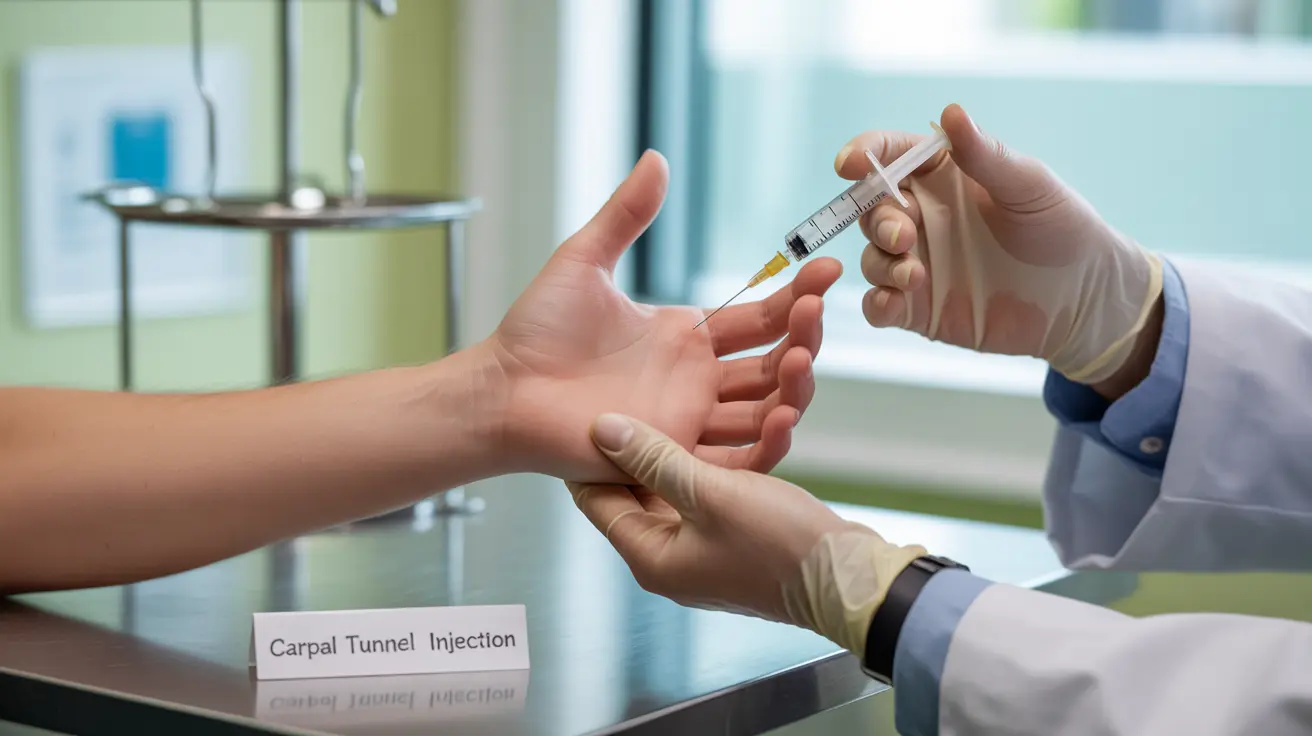If you're suffering from carpal tunnel syndrome, you may be considering cortisone shots as a treatment option. These injections, also known as corticosteroid injections, can provide significant relief from the pain, numbness, and tingling associated with this common condition. Understanding how these injections work and what to expect can help you make an informed decision about your treatment.
In this comprehensive guide, we'll explore the effectiveness, procedure, risks, and expected outcomes of cortisone shots for carpal tunnel syndrome, helping you understand if this treatment option might be right for you.
Understanding Cortisone Injections for Carpal Tunnel
Cortisone shots deliver powerful anti-inflammatory medication directly into the carpal tunnel, where the median nerve is compressed. These injections typically contain a combination of a corticosteroid and a local anesthetic, working together to reduce inflammation and provide immediate pain relief.
The Injection Procedure
Preparation and Administration
The procedure typically takes place in a doctor's office and usually lasts about 15 minutes. Your healthcare provider will clean the injection site and may apply a local anesthetic to minimize discomfort during the procedure. The injection is administered precisely into the carpal tunnel using either a landmark-guided or ultrasound-guided technique.
Types of Injection Guidance
Modern medical practices often utilize two main approaches for administering cortisone shots: landmark-guided and ultrasound-guided injections. Ultrasound guidance allows for more precise placement of the medication and may result in better outcomes for some patients.
Benefits and Effectiveness
Cortisone injections can provide significant relief from carpal tunnel symptoms, often within a few days of treatment. Many patients experience reduced pain, decreased numbness, and improved hand function. The effects typically last several months, though individual results can vary significantly.
Short-term Relief
Most patients notice improvement within 24-48 hours after the injection, primarily due to the local anesthetic component. The cortisone itself typically begins working within a few days, providing more sustained relief.
Long-term Outcomes
While cortisone shots can provide substantial temporary relief, they may not be a permanent solution for everyone. Some patients find that one or two injections provide sufficient relief, while others may need additional treatments or eventually consider surgical options.
Potential Risks and Side Effects
While generally safe, cortisone injections can have some side effects that patients should be aware of:
- Temporary pain or discomfort at the injection site
- Skin discoloration around the injection area
- Temporary increase in blood sugar levels (particularly important for diabetic patients)
- Risk of infection (though rare)
- Potential nerve injury (very rare, especially with ultrasound guidance)
Post-Injection Care
After receiving a cortisone shot, patients should:
- Rest the treated hand for 24-48 hours
- Apply ice if experiencing discomfort
- Monitor the injection site for any signs of infection
- Follow up with their healthcare provider as recommended
Frequently Asked Questions
How effective are cortisone shots for relieving carpal tunnel syndrome symptoms?
Cortisone shots are highly effective for many patients, with studies showing that 60-70% of people experience significant symptom relief. The effects typically last for several months, though individual results vary.
What are the common side effects and risks of corticosteroid injections for carpal tunnel syndrome?
Common side effects include temporary pain at the injection site, skin discoloration, and brief elevations in blood sugar levels. Serious complications like infection or nerve injury are rare, especially when performed by experienced practitioners.
How long does it take to feel relief after a cortisone shot for carpal tunnel?
Initial relief often occurs within 24-48 hours due to the local anesthetic. The full anti-inflammatory benefits of the cortisone typically develop within 3-5 days after the injection.
What is the difference between ultrasound-guided and landmark-guided cortisone injections for carpal tunnel?
Ultrasound-guided injections use real-time imaging to ensure precise placement of the medication, potentially improving accuracy and outcomes. Landmark-guided injections rely on the provider's anatomical knowledge and physical markers to determine injection placement.
Can cortisone shots for carpal tunnel syndrome delay or prevent the need for surgery?
Yes, cortisone shots can potentially delay or prevent the need for surgery in some cases, particularly when administered early in the condition's progression. However, if symptoms persist or worsen despite injections, surgery may still be necessary.




